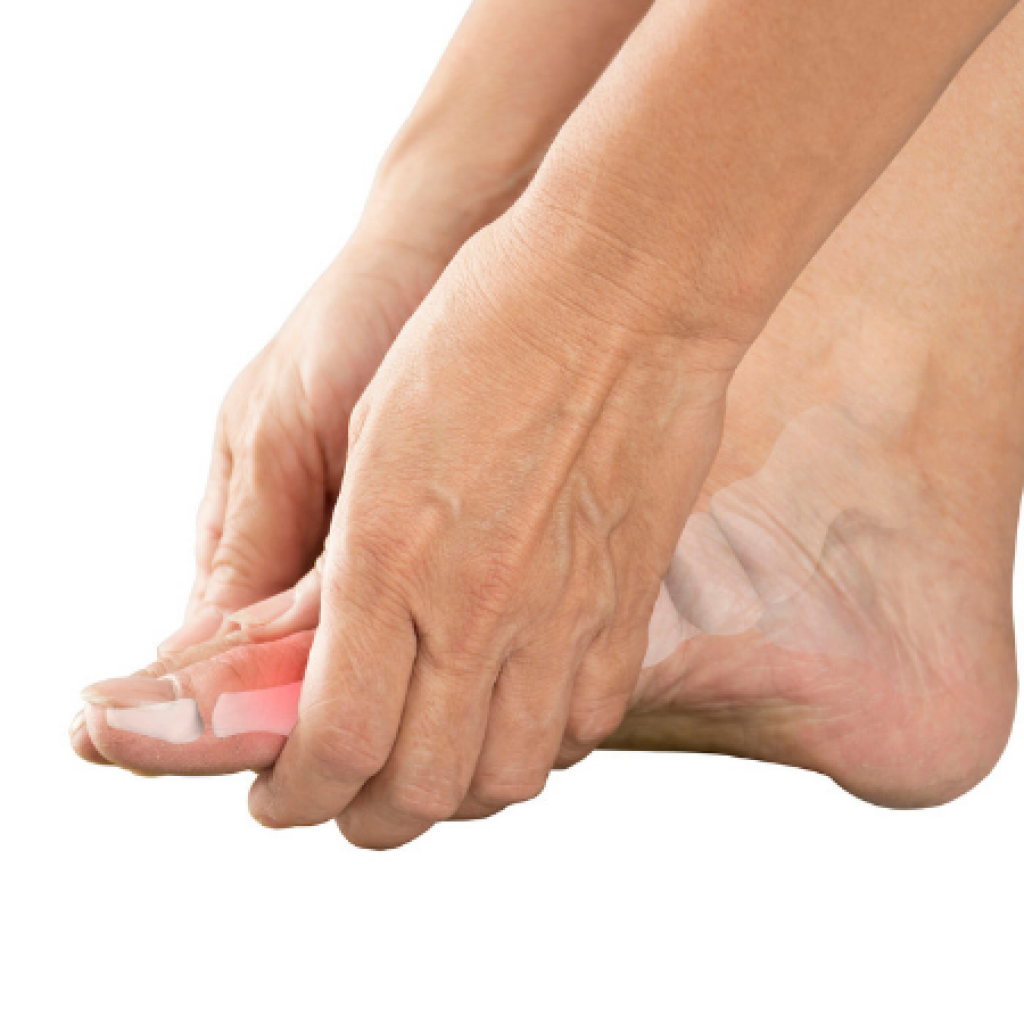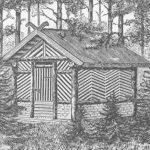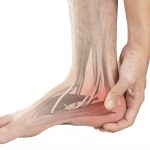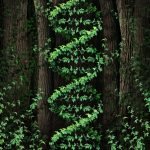Nature Cure Clinical Pearls
Sussanna Czeranko, ND, BBE
Gouty subjects, who could find no relief whatever in medicine, were those that Priessnitz cured the quickest, however violent the disease. – Joel Shew, 1845, p.231
If patients have been ten, twenty, or fifty years getting sick, they want to be cured in a month, and often think it very hard if the water cure physician will not promise them a cure, of perhaps a life-long disease, in that time. – Mary Nichols, 1848, p.44
More than any other systemic poison, uric acid has probably figured as the originator of primary acute diseases in the human family. – Henry Lindlahr, 1910, p.461
Gout was common in the days of Vincent Priessnitz and continues to be. In fact, the prevalence of gout is on the rise. It has been increasing over the past 2 decades, affecting 5.9% of men and 2% of women in the United States. (Zhu, 2011, p.3136) Factors such as obesity and hypertension are likely contributing to the rise of gout. In this article, we will compare the treatments offered by Vincent Priessnitz and Sebastian Kneipp and the followers of both.
The etiology of gout has not changed over the centuries. In the 18th century, doctors attributed gout to the consumption of rich foods and alcohol. (Smith, 1723, p.36) John Smith writes almost 3 centuries previously, “Gout is generally caused by drinking [too much] fermented liquors and is never said to have assaulted any drinker of water.” (Smith, 1723, p.12) An early Naturopath, Joseph A. Hoegen, attributed gout to excessive, rich, and albuminous foods, as well as to too little or poor nourishment. He adds, “The stomach is not in the best of condition, owing to the fact that the food is improperly cooked and not properly assimilated. Too many spices spoil the stomach, as does the use of strong wines.” (Hoegen, 1916, p.125) Even today, food and alcohol are the first factors to be blamed for gout.
The symptoms of gout included pain, swelling, and redness of the skin. In the literature of the “Water Curists” of the 19th century, gout had many names, depending upon where the symptoms were found. Gout was called chiragra if found in the hands, podogra if found in the feet, and gonagra if the knees were affected. (Shew, 1845, p.230) In any case, gout is commonly localized in the lower extremities, especially the feet. Sometimes, however, the whole body shows symptoms.
Hoegen describes the typical gout patient: “Stout persons as a rule are troubled some time before the outbreak [of gout] with piles [hemorrhoids], poor sleep, palpitations of the heart, a feeling of fullness, loss of appetite, easy perspiration, thickened urine, etc.” (Hoegen, 1916, p.126) Then the real pain of gout appears. Hoegen’s description is rich with detail:
After the warning becomes more severe and oftener, the first gout attack appears in the form of a severe, boring pain in the ball of the large toe which swells, becomes red through inflammation, and also feels as if it contained a watery fluid. The urine becomes a deep red color and has considerable sediment. The pain can be so severe that the patient will tremble with anguish, perspiration breaking out on the forehead, the skin is hot and dry, and there is rapid pulse, great thirst and sometimes high fever. (Hoegen, 1916, p.126)
The Influence of Priessnitz
So effective were water-cure methods for gout that Dr Thomas Nichols thought it superfluous to write about cures of gout in his treatise. He writes, “The cases of relief are so numerous that there can be very few who have not had some within the sphere of their own personal observations.” (Nichols, 1851, p.39) Nichols was a follower of Priessnitz and is credited with establishing in 1851 the country’s first hydropathic medical school, The American Hydropathic Institute, with the help of his talented wife, Mary Nichols.
The practice of doctors in the 18th century was to recommend drinking copious amounts of water to alleviate gout pain. (Smith, 1723, p.37) Joel Shew, one Priessnitz’s most prolific students, wrote an introduction to John Smith’s treatise, which was featured in third volume of the Water Cure Library series. Shew reports, “The editor of The Lancet, about four years since, said: If we could always persuade a patient who consults us for the first fit of the gout, to drink water for the rest of his life, to take exercise, and to diminish by half the amount of animal food he is in the habit of taking, there would be but little chance of a return of the attack.” (Shew, 1855, p.13) Shew’s interest in hydrotherapy was instrumental in gathering historical treatises on the subject that were re-published in Water Cure Library publications.
In Volume III of the Water Cure Library, Russell Thacher Trall (1812-1877) provides his theories on the treatment of gout. He emphasizes treating the whole body rather than just the painful parts aggravated by gout. Trall followed in the footsteps of Priessnitz and opened up the pores of the skin with a sweating treatment, followed by cold water immersion. The whole body treatment is begun “by the sudorific process, or baths, to relieve that excessive irritability of the skin, which is the source of so much pain.” (Trall, 1855, p.173) Another water therapy used by Trall included douches, beginning with as much of the body that could tolerate the douche, and when the affected parts were able, to include the whole body. “Cold water must be drunk freely; the diet must be vegetable and scanty; much exercise in the open air, and friction, by rubbing and brushing the whole body, and of the affected parts particularly, are very necessary.” (Trall, 1855, p.174)
One of Priessnitz’ followers, Mary Nichols [1810-1884], specialized in gynecology using water cure. Her treatment of gout used Priessnitz’ signature water application, the wet bandage. Wet bandages would be worn constantly on the affected part, and if the inflammation and pain were intense, the thickness of the linen compress would be greater. She used wet sheet wraps or packs, local cold water bandages, and fasting to cure patients. She writes of patient compliance: “The patient must have the same will as his physician, or he may undo a week’s work or make it of no avail by one ‘good’ dinner or other excess, such as has caused his disease.” (Nichols, 1848, p.104)
Warm water, considered to be equivalent to dead water, was not employed at Gräefenberg. Shew outlines the merits of cold water used by Priessnitz. He writes:
Priessnitz’s method of cure unites all the advantages of the cure by warm water, without its inconveniences; like the latter, it attacks and raises the vitiated juices, and expels them from the system with advantage; it fortifies the system in hardening it, and by re-establishing the digestive functions; whilst warm water ruins them completely. (Shew, 1845, p.231)
One of the cardinal features of the Priessnitz treatment plan was the sudorific process. “The process of strong perspiration is of the greatest importance in cases of gout, particularly for those who have tried other remedies.” (Shew, 1845, p.232) Shew is referring to emetics, purgatives, and mercury that were destructive to the digestion of patients under allopathic care. Rausse compares water therapies with drawbacks of drugs:
The administration of medicaments is absurd, because it effects a suppression of the indications of reaction of the organism against the matters of disease, that is a suppression of the endeavor of the body to excrete the matters of disease; whereas the administration of water for the purpose of a radical cure, arouses the dormant (that is, mucous enveloped) matters of disease and brings them into immediate contact with those parts of the body endowed with organic life. (Rausse, 1851, p.11)
The sweating blanket treatment was often combined with cold compresses placed on the affected parts. (Please refer to my June 2017 NDNR article on Priessnitz and his sweating blanket bath.) (Czeranko, 2017)
Shew explained that if gout is mostly in the lower extremities, “cold foot baths are a quick and powerful remedy. The water for the foot baths should be deeper than up to the ankles.” (Shew, 1845, p.234) An important precept was that people with cold feet do not take cold foot baths. The feet must be warm. Those with cold feet were advised to wash their feet while applying wet friction to them in preparation for cold foot baths. This period might take a few weeks before the patient would be able to be exposed to cold foot baths. (Rausse, 1851, p.49) Sitz baths were prescribed for those with gout symptoms in the hips. Besides the various baths, bandages made of cold, wet linen cloths were wrapped around the affected parts.
Case 1
A clergyman arrived at Gräefenberg with gout in his hands and feet so painful that he was unable to function. Fifteen days after he had commenced the treatment, boils appeared. The clergyman was suddenly called home during this phase of boils, a sign of the healing crisis and the disease resolving. He continued his treatments at home, and within 6 weeks all of his gout symptoms were gone and his asthma was completely cured. (Shew, 1845, p.238)
Kneipp’s Gout Cures
Kneipp, although renowned for his short, cold water applications, also used warm water baths with herbal decoctions. To be clear, warm water used by Kneipp was only employed if herbal decoctions were added. Examples of herbs used by Kneipp included hay flowers, shave grass [Equisetum arvense] and oat straw. “The sitting bath with oat straw is an excellent bath for all complaints of gout.” (Kneipp, 1896, p.52)
Kneipp saw gout as an unequal distribution of food to the body, that is, some parts getting an over-abundance and other parts not getting enough. Using an analogy from Nature, Kneipp writes, “What must be the consequence if the body by means of very nourishing and strengthening food is supplied with so much building up material as would suffice for the construction of two or three other bodies. Swamps (thick blood) will form in one place, bogs (bad juices) in another, and the bones will be encumbered by heaps of sand, lime and stones.” (Kneipp, 1896, p.313)
Gout is very often associated with decadent overeating of rich foods that are only available to those with means and wealth, but in Kneipp’s experience the poor were not spared. Some of the other causes of gout included “over-exertion, dampness and cold.” (Kneipp, 1896, p.314) The poor willingly obeyed Kneipp’s recommendations of water cure, unlike those of noble pedigrees, who were too often weak and cowardly. Here are some cases to illustrate the treatments used for people with gout.
Case 2
Kneipp recounts a case of “a gentleman of high rank [who] had suffered from violent pain in his feet for about four weeks.” (Kneipp, 1896, p.314) The man had undergone a sweating cure, which gave him temporary relief. The following year the gout returned, resulting in his being bedridden for 12 weeks. The sweating cure would imply that for the gentleman who used Priessnitz sweating blanket bath, there had been no effect the second time, so he consulted Kneipp. The patient, eager to rid himself of gout, agreed to do anything and everything to rid himself of the affliction. In a few weeks, the compliant patient was free of all his pains and stayed well by periodically resorting to some of Kneipp’s treatments.
Case 3
A despaired priest consulted Kneipp and described his feet as “burning as if containing real fire.” (Kneipp, 1896, p.315) Kneipp advised the priest to boil some hay flowers in water. The hot hay flowers were laid onto a linen cloth and the priest was to lay his feet on the hot hay flowers and wrap them up as a pack. “After two hours the hay flowers were to be re-dipped in the infusion, squeezed out and put on again. It is of no importance whether the hay flowers are cold or warm for this renewed application.” (Kneipp, 1896, p.315) After the first few hours, the priest had improved, and in 2 or 3 days he was completely pain-free.
When pain lessens or disappears, Kneipp noted that patients often believed themselves to be perfectly cured. However, even with pain gone, Kneipp knew that the waste products and morbid matter still must be removed from the body. Thus, he cautioned his patients to continue with the water applications to remove all of the morbid matter from the body. To facilitate depuration and the removal of morbid matter, there were 2 additional water applications that gout patients would do after the pains were allayed with the wraps and baths. First, patients would be advised to use foot packs that were followed with the Spanish mantle 2 or 3 times a week for the first 3 weeks. (Kneipp, 1896, p.315) Additionally, Kneipp recommended warm baths, using either hay flowers or oat straw. (Kneipp, 1896, p.316)
Kneipp’s motivational impetus, in his work as a priest who dispensed water cure for those in need, had an intractable commitment of service to his parish who were so often poor and lacking the means for basic necessities. Kneipp loved water and herbal remedies because both of these therapies were easily accessible and free for the taking.
Case 4
In another case of a worker who suffered from severe gout, the suggestions made to him included herbal baths and herbal wet-sheet wraps. Two hot baths [104° to 110°F/40° to 43°C] made with pine sprigs were taken each week. To make an herbal sheet pack, a sheet was dipped into a hot decoction of oat straw that would be renewed and changed 3 times. This patient would have this hot herbal wrap twice a week. Additionally, each week this man had 2 cold water ablutions in bed. He regained his health in about 3 weeks and continued to do the water treatments. One week he would do an herbal wet sheet pack, and the following week a warm herbal bath. (Kneipp, 1896, p.316)
Case 5
A case of a man who dug wells came to Kneipp with swollen fingers and toes caused by constant damp exposure. His treatment plan involved hot pine spring baths every other day, and every 3 or 4 days he had an oat straw sheet pack. During the night, his hands were wrapped up with boiled hay flowers. These simple water treatments restored this man so that he could return to work. (Kneipp, 1896, p.316)
Boiling in a Haystack
A poor farmer had incapacitating piercing joint pains and was unable to work. Because it was haying season, Kneipp told the man to go to his haystack, which was fermenting, and make a hole so that he could be immersed in the haystack with only his head protruding. He did as he was told, and within 15 minutes he was swimming in his own perspiration. The farmer had 6 hay baths over the next 10 days and was completely relieved of his pain. (Kneipp, 1896, p.316) The “hay vapor bath” is a novel treatment that had powerful outcomes. To maximize the benefits of a hay vapor bath, it was immediately to be followed by a cold half-bath with ablution of the upper body. (Kneipp, 1896, p.317)
Alexander Haig’s Contributions
These above examples indicate how frequently the Naturopaths of the early 20th century turned to Kneipp for an array of water-cure applications for gout. They also relied on Dr Alexander Haig, who wrote, Uric Acid as a Factor in the Causation of Disease (1892). Haig identified uric acid as a culprit for many diseases, and studied the impact of food. Haig’s views of dietary choices in the 19th century are applicable even today: “Diet, as at present used, is the product of a vast amount of ignorance. It is the cause of a hideous waste of time and money; it produces mental moral obliquities, destroys health and shortens life, and generally quite fails to fulfill its proper purpose.” (Brook, 1905, p.321)
Two book reviews of Haig’s book by Harvey Brooks and Henry Lindlahr appeared in The Naturopath and Herald of Health. Lindlahr’s interest in Haig’s theories of uric acid confirmed his own on dietary contributions to disease. Haig identified coffee, tea, nicotine, and animal proteins as contributors to uric acid excess, one of the most common causes of diseases.
Haig divided uric acid diseases into 2 groups: Collaemic and Gouty. The collaemic diseases occurred when uric acid “circulating in the blood in large quantities forms a glue-like (colloid) substance, which clogs and obstructs the … capillaries.” (Lindlahr, 1910, p.461) Blood backs up to the heart and the blood pressure rises. Lindlahr explained Haig’s work: “This results in the congestion of the blood in internal parts and organs and in obstruction of the surface circulation. In such cases, the surface of the skin and extremities are cold and clammy, while the inner temperature may be above the normal.” (Lindlahr, 1910, p.461) Symptoms of collaemia include “lassitude, headache, palpitation of the heart, irritation in the muscular tissues, etc.” (Lindlahr, 1910, p.462) Uric acid in small amounts results in the symptoms described with colloid substance in the blood. A common symptom experienced by Haig himself – a 1-sided headache – was the impetus for discovering uric acid and its effect of causing high blood pressure.
Haig discovered that once the uric acid is increased and continues increasing, “the congestive and irritating symptoms [of collaemia] diminish and disappear.” (Lindlahr, 1910, p.462) This contradiction has an explanation. Lindlahr continues, “The blood, which is a natural solvent for acids, loses its power of holding acids in solution when charged with them beyond a certain limit. It will be seen that low amounts of acids in the circulation are normal, that higher amounts create collaemic symptoms, and that still higher percentages cause the precipitation of all the acids from the circulation into the tissues.” (Lindlahr, 1910, p.462)
The Skin Test for Uric Acid
A simple test was devised by Haig to determine high levels of uric acid without resorting to chemical lab tests. “If a white spot is made by pressure with the finger tip on the back of the hand, the color will take from three to four seconds or more to return; while where there is no excess or uric acid in the blood, it may only take from one and a half to two seconds.” (Brooks, 1905, p.321)
Uric Acid and Gout
The alkalinity of the blood is maintained by sodium, magnesium, and potassium, and prevents uric acid from causing damage by precipitating into the tissues and joints. “If alkalinity is too low, and acidity too high, then the ‘Gouty’ symptoms begin to manifest because high acidity completely overcomes the solvent power of the blood for acids and the latter become precipitated from the circulation into the tissues and joints.” (Lindlahr, 1910, p.462) In other words, if uric acid is higher than what the blood can neutralize, then over time uric acid deposits into the joints that become well known as gout and rheumatism, and can affect all of the organs. As Lindlahr explained, the irritation caused by acid deposits is not just limited to the joints in gout, but can affect “chronic inflammation of the heart, kidneys [stones], stomach, intestines, ovaries, uterus and bladder.” (Lindlahr, 1910, p.462)
Naturopathic Treatments
Carl Strueh provides a simplified and readily understandable explanation of gout: “A considerable number of persons will store up the surplus of food in the form of fat, while others who do not possess very active eliminating organs will retain the half digest food as uric acid.” (Strueh, 1908, p.177)
The objective of naturopathic treatment of gout was first to dissolve the salts of uric acid in the tissues. Benedict Lust explains the procedure: “The sole logic and natural way of treatment to effect a dissolution of the uric acid salt deposits can consist only in artificially inducing the same process to take place again, but this time in the reverse order.” (Lust, 1903, p.90) To prevent the formation of new uric acid, a vegetarian diet was the first step. Gout caused by too rich of a diet was countered with one that increased the consumption of vegetables. “The following articles must be completely eschewed: eggs, cheese, legumes, heavy farinaceous foods, too rich and especially heavily spiced meats; then also, wine, beer, coffee, chocolate, spices of all kinds, sour fruit and acid foods.” (Lust, 1902, p.349) To aid the blood in dissolving uric acid salts, higher temperatures were used. Lust used the same treatment that Kneipp had used: warm hay flower bandages. “After the removal of the bandages, it is very advisable to give a cold local application, either by an ablution or by a cold local gush.” (Lust, 1903, p.91) Hoegen included similar treatments used by Lust and added, “hot full baths, dry heat baths, and Epsom salts baths are very beneficial in eliminating poisons from the body.” (Hoegen, 1916, p.126)
Gout, as a topic in the Lust publications, does not resurface for 10 years. Dr Schoenberger outlines his treatment protocol for acute symptoms of gout: absolute rest, and evacuation of the bowels followed by a 24-hour fast with copious amounts of water to drink. Inflamed parts are wrapped in hot poultices, followed by hot showers and salt water rubs and massage. He provides instruction for galvanic current: apply the anode to the inflamed joint and the cathode to a healthy spot of the body. (Schoenberger, 1926, p.390)
Gout as a disease has existed for centuries, and although the science of Haig’s research would confirm that diet was indeed implicated, the early practitioners of Water Cure and Naturopathy had simple methods providing relief for many suffering from this recurrent and painful condition.
References:
Brook, H. (1905). Uric acid. The Naturopath and Herald of Health, VI (11), 320-323.
Czeranko, S. (June 2017). Vincent Priessnitz & the Blanket Pack. Naturopathic Doctor News & Review, 13, 6, 22-24.
Hoegen, J. A. (1916). Rheumatismus, gout and muscular rheumatism, their treatment with hydrotherapy. Herald of Health and Naturopath, XXI (2), 125-127.
Kneipp, S. (1896). The Kneipp Cure. New York City, NY: The Kneipp Cure Publishing Company, p.451.
Lindlahr, H. (1910). The metamorphosis of uric acid. The Naturopath and Herald of Health, XV (8), 461-464.
Lust, B. (1902). Kneipp’s popular healing remedies, and their application. The Naturopath and Herald of Health, III (8), 348-349.
Lust, B. (1903). Gout, and the natural way of treating it. The Naturopath and Herald of Health, IV (4), 89-91.
Nichols, M. (1849). Experiences in Water Cure. Water Cure Library Volume II. New York, NY: Fowlers and Wells Publishers, p.108.
Nichols, T. L. (1851). An Introduction to the Water Cure. Water Cure Library, Volume II. New York, NY: Fowlers and Wells Publishers, p.46.
Rausse, J. H. (1851). Errors of Physicians and others in the Practice of Water Cure. Water Cure Library, Volume VI. New York, NY: Fowlers and Wells, p.91.
Schoenberger, Dr. (1926). What is to be done in sudden attacks of gout? Nature’s Path, II (8), 390.
Shew, J. (1855). Curiosities of common water. Water Cure Library, Volume III. New York, NY: Fowlers and Wells Publishers, p.90.
Shew, J. (1845). Hydropathy, or Water Cure, Its Principles, Modes of Treatment. New York, NY: Wiley and Putnam Publishers, p.360.
Smith, J. (1723). Curiosities of common water. Water Cure Library, Volume III. New York, NY: Fowlers and Wells Publishers, p.90. Later publication, 1855.
Strueh, C. (1908). Uric acid poisoning. The Naturopath and Herald of Health, IX (6), 177-178.
Trall, R. T. (1855). Hydropathy for the people. Water Cure Library, Volume III. New York, NY: Fowlers and Wells Publishers, p.250.
Zhu, Y., Pandya, F. J., & Choi, H. K. (2011). Prevalence of gout and hyperuricemia in the US general population. Arthritis & Rheumatism, 63 (10), 3136-3141.
 Sussanna Czeranko, ND, BBE, graduate of CCNM, is a licensed ND in Oregon and has developed an extensive armamentarium of traditional nature-cure tools for her patients. Especially interested in balneotherapy, botanical medicine, breathing, and nutrition, she is a frequent presenter. As Curator of the Rare Books Collection at NUNM, she has completed Hydrotherapy in Naturopathic Medicine, the tenth book of the 12-book series in the Hevert Collection. Her next large project is the completion of her new medical spa, located in Manitou Beach, Saskatchewan – a magical, saline lake. Come join her for the Inaugural “Finding Our Roots Again Retreat,” August 2019.
Sussanna Czeranko, ND, BBE, graduate of CCNM, is a licensed ND in Oregon and has developed an extensive armamentarium of traditional nature-cure tools for her patients. Especially interested in balneotherapy, botanical medicine, breathing, and nutrition, she is a frequent presenter. As Curator of the Rare Books Collection at NUNM, she has completed Hydrotherapy in Naturopathic Medicine, the tenth book of the 12-book series in the Hevert Collection. Her next large project is the completion of her new medical spa, located in Manitou Beach, Saskatchewan – a magical, saline lake. Come join her for the Inaugural “Finding Our Roots Again Retreat,” August 2019.





